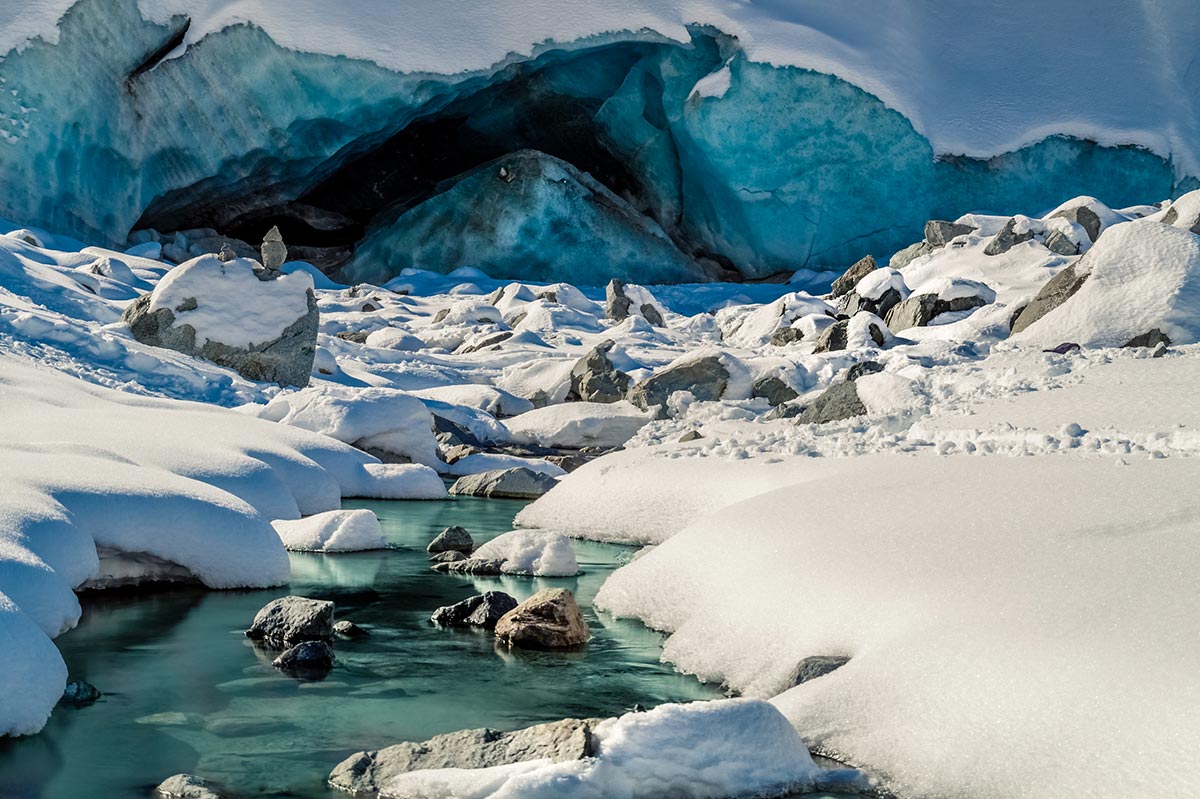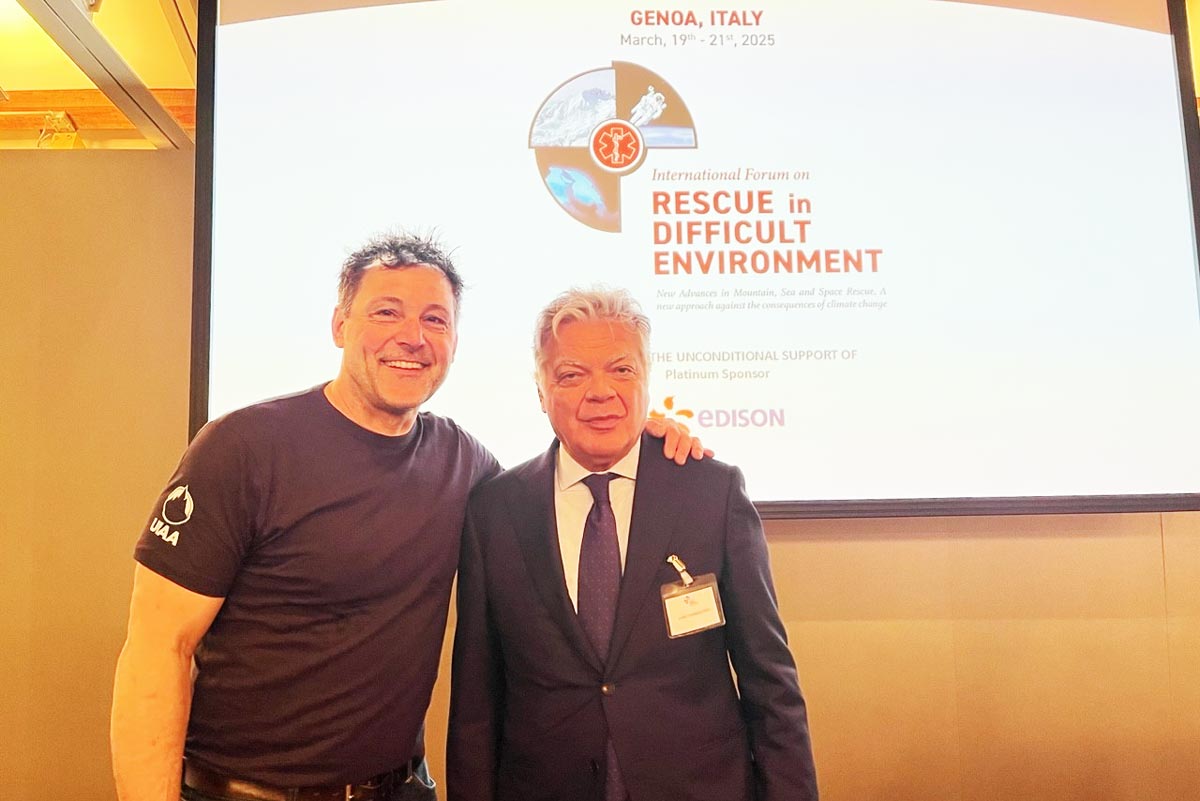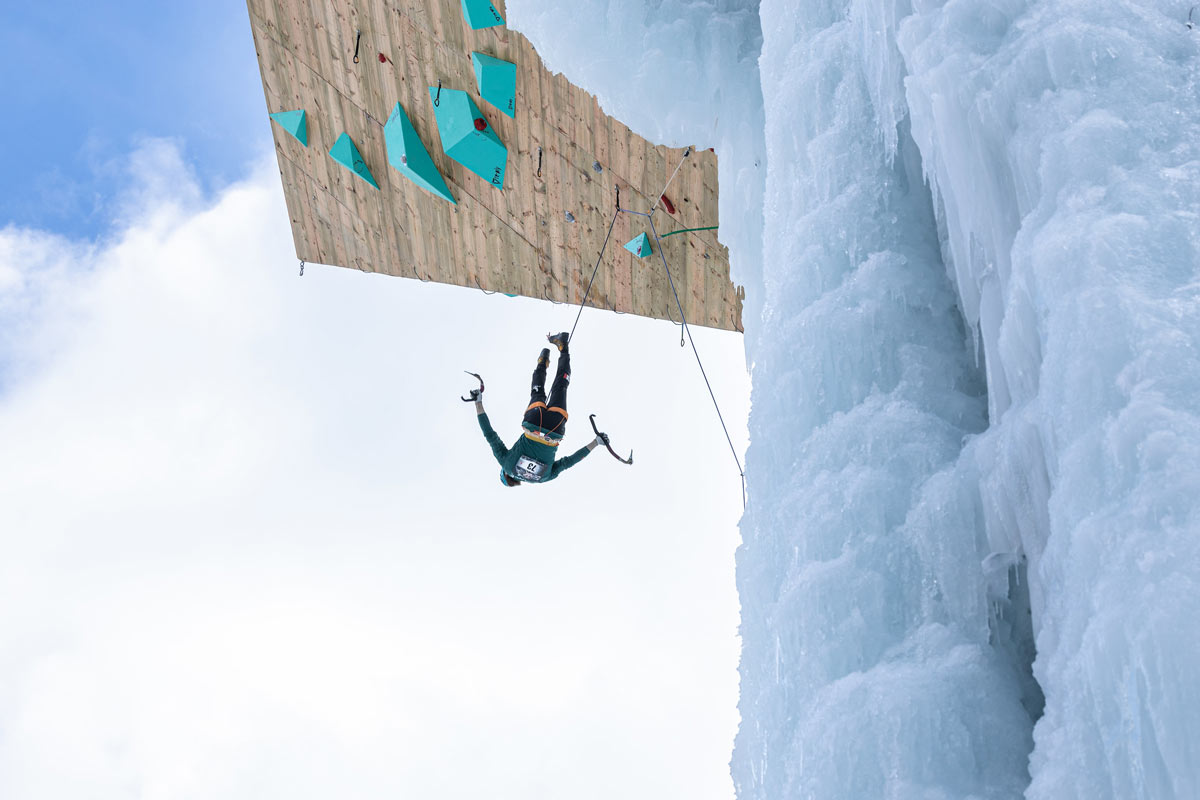In the lead up to International Mountain Day, 11 December, and to celebrate the 50 years of the UIAA Mountain Protection Commission (MPC), the UIAA takes a trip through the archives to select ten stories from the Commission’s proud history.
1969 – Official foundation of the Commission
In 1939, W. Goetel from Poland was asked to form a UIAA Commission for nature protection. However, since this was just before the outbreak of World War II, the Commission was not officially established. The environmental work of the UIAA continued without a Commission and during the 1950s and 1960s the UIAA led the opposition against cable car and railroad projects in high mountains such as the Matterhorn and Jungfrau, sometimes with success. In 1953, the UIAA became a member of the Commission Internationale pour la Protection des Alpes (CIPRA), an organization working for sustainable development in the Alps.
In 1969, the Environment Protection Commission was re-established and soon renamed the Mountain Protection Commission (MPC). Radek Roubal from Czechoslovakia became the first post-war President and he encouraged the UIAA to join the World Conservation Union (IUCN), the world’s largest and most important conservation network. “One should not underestimate the importance of our Commission,” explained Professor Roubal, “and I declare that the efficiency of its work to defend nature and our mountains will depend on the will and ardour of the alpinists of this world and their associations.”
1977 – First Official Publications

During the Commission’s meetings in 1977 and 1978, the document “Guidance for nature protection work and education of mountaineering organisations” laid out by the DAV (Germany) and PSJ (Yugoslavia), was heavily debated. It was accepted by the Commission in the 1978 meeting in Zagreb, Yugoslavia and presented to the GA for approval that same year.
The final document dated 24 April 1979 detailed the following:
- The importance of providing guidance to UIAA member associations who don’t have mountain protection commissions in place.
- Highlighting that nature is endangered in almost all parts of the world, and that the consequences of nature destruction are becoming bigger and bigger.
- How a mountain protection commission can directly and indirectly influence the protection of the mountain environment.
- Directly through the realisation of educative programmes which focus on teaching locally, regionally, nationally and internationally.
- And indirectly, through various denunciations of projects which damage nature and landscapes. Furthermore, mountaineering associations are said to have social-political powers to influence laws, the passing or denouncing of enactments, and space/construction planning.
In a separate matter but also in 1978, the Commission discussed, accepted and presented a resolution to the UIAA demanding it to approach the European Council, which should work out guidelines to protect nature landscapes, especially the Alps. These guidelines should, according to the Commission, be used by governments of alpine countries for development of laws on construction/space planning, nature and environmental protection.
1982 – Kathmandu Declaration
The Kathmandu Declaration, published in October 1982, ‘focused on the protection of the mountains as well as the population of the host countries and environment’. Five years later there was a desire for this declaration to be supported by an Ethical Code for Expeditions. The message of both declarations remain as pertinent today, if not more so, as they did over thirty years ago.
The Kathmandu Declaration stated:
1. There is an urgent need for effective protection of the mountain environment and landscape.
2.The flora, fauna and natural resources of all kinds need immediate attention, care and concern.
3. Actions designed to reduce the negative impact of man’s activities on mountains should be encouraged.
4. The cultural heritage and the dignity of the local population are inviolable.
5. All activities designed to restore and rehabilitate the mountain world need to be encouraged.
6. Contacts between mountaineers of different regions and countries should be increasingly encouraged in the spirit of friendship, mutual respect and peace.
7. Information and education for improving the relationship between man and his environment should be available for wider and wider sections of society.
8. The use of appropriate technology for energy needs and the proper disposal of waste in the mountain areas are matters of immediate concern.
9. The need for more international support – governmental as well as non-governmental – to the developing mountain countries, for instance, in matters of ecological conservation.
10. The need for widening access to mountain areas in order to promote their appreciation and study should be unfettered by political considerations.
1994 – Tourism flights in mountain regions
At the GA of 1994 held in Istanbul, Turkey, a paper titled ‘Tourism Flights in Mountain Regions’ was approved. This resolution described general principles to be used as a basis by UIAA member associations, according to the local situation in each country. The UIAA noted the increasing concern among visitors to mountain regions and local people living in these areas at the use of aircraft for tourism purposes – both helicopters and fixed wing aircraft spoil the attractiveness of mountain regions through noise pollution and by undermining the ethical basis for many mountain activities. The paper stated:
The UIAA is very much aware that a key characteristic of mountain regions is their naturalness and the extent to which the sights and sounds of nature dominate the scene. This provides the backdrop for a very wide range of mountain activities. Many of which have elements of adventure, physical effort and discovery, while also depending on remoteness for their full enjoyment. For those who live in mountain regions the excessive use of aircraft can affect daily activities and create an unwanted intrusion into economic activities that depend on a harmonious relationship between people and nature.
While taking into account the particularly valuable role that aircraft may play in rescue and emergency needs, as well as the transportation of heavy loads, the UIAA requests that governments and the authorities responsible for air traffic regulation bring in appropriate measures to better control and limit the use of aircraft for tourism purposes in mountain regions. Provided there are no other reasonable transportation means, aircrafts may be used for the access to the border of mountain regions but should not be tolerated in the highest areas themselves. Sightseeing flights can only be accepted at a distance such that they do not provoke any noise intrusion in these areas. Of course, landing and picking up persons for recreational or commercial purposes should be excluded for both ethical and noise pollution reasons in mountain areas valued for their natural qualities.
These limitations will not in any way preclude the use of aircraft in mountain regions to meet essential rescue or emergency needs, or exceptional transportation of heavy loads.

1997 – UIAA Environmental Guidelines and Objectives
In 1997, the UIAA Environmental Guidelines and Objectives was approved at the GA in Slovenia. The paper is currently being revised by the MPC in collaboration with the IFMGA’s Environmental Commission.
The policy statement provided an outline of the main environmental issues that concern mountaineers. It recognised that the term “mountaineering”, as practiced by UIAA member federations, includes all aspects of the following activities: climbing, hiking, trekking and ski touring. It considered both the effects of mountaineering on the environment and also the role that UIAA hopes mountaineers will play in helping to secure a sustainable future for the mountain environment. These objectives and guidelines provided the framework, for member federations to follow when supporting mountaineering activities. They were designed to help member federations ensure that mountaineering activities are sensitive to environmental needs and assist efforts to protect cliff and mountain areas from adverse environmental impacts, from whatever source. They were based on international guidance on conservation and sports activity and UIAA policy statements and reports. Claude Eckhardt, today UIAA honorary member, was Commission President for some of this period.
2005 – UIAA Environmental Labels

In the mid 2000s, the UIAA offered an Environmental Label on a similar principal to its longstanding Safety Label. The Label was available to companies, mountain operators and partners who wanted to promote high standards of conduct and responsible access for climbing and mountain activities.
The presentation about the Label read: “Protection of the mountain environment is a central issue to the UIAA. In order to keep mountains free of rubbish and pollution caused by visitors it is necessary that everyone involved in mountaineering activities do their part. Unfortunately not everybody who organises mountaineering activities take the necessary steps to protect fragile mountain environments. Therefore we have created the UIAA Environment Label, which can be awarded to providers of organised activities such as a training centre, trekking or expedition organisation, qualified instructor or guide.”
The UIAA Environment Label would offer a mountain user security that a trek or expedition has committed themselves to acting according to the UIAA’s Environmental Objectives and Guidelines. It was phased out and replaced by newer projects by 2010.
2008 – Argeos Charter
Argeos – the ancient Latin name for Mount Ercyes in Kayseri, Turkey – was where this paper was finalised in June, 2005. Being aware of the importance and grandeur of mountain landscapes the UIAA, at the instigation of Stefano Tirinzoni of CAI, produced a set of guidelines for sustainable mountain tourism in countries where mountain tourism is in its infancy.
The guide covers the following key areas: Understanding and protecting the environment, preserving cultural identity and tourism in the mountains. The paper was the latest in the series produced by the UIAA and notably supported by the Mountain Protection and Access Commissions throughout the 1990s and 2000s. A demonstration that the UIAA remained at the forefront of raising awareness about mountain protection.
2013 – UIAA Mountain Protection Award

Since 2013, the UIAA Mountain Protection Award (MPA) has showcased 118 projects from over 30 countries. The platform has enabled initiatives to receive international recognition and much-needed funding. It has provided an opportunity to exchange ideas and share best practices. Investment generated by the Award has helped projects advance in meeting key targets such as building infrastructures to improve the lives and conditions of mountain people and communities. The MPA has become one of core projects of the federation earning international recognition and as of 2019 a new partner in the luxury Swiss fashion brand BALLY.
The Award was launched during Linda McMillan’s spell as President. On election in 2008 when she became only the third female President of a UIAA Commission, McMillan stated: “Many of the world’s most effective conservationists in history have been rock climbers and mountaineers, and I plan to build on that impressive legacy to help the UIAA and its members gain the recognition and ‘voice’ they deserve in global conservation issues, particularly mountain protection.” The Mountain Protection Award open to initiatives, projects and associations whose activities directly relate to mountaineering and mountain-based sports and in parallel who demonstrate an engagement and collaboration with local communities to develop a culture of mountaineering activities became an emphatic step in that direction.
The seven Award winners to date are:
2013: MENZ-GUASSA COMMUNITY CONSERVATION AREA, Ethiopia
2014: PAMIR HORSE ADVENTURE, Tajikistan
2015: KTK-BELT STUDIO, Nepal
2016: MOUNTAIN WILDERNESS, France
2017: MOUNT EVEREST BIOGAS PROJECT, USA
2018: COMMUNITY ACTION NEPAL, UK
2019: SWISS ALPINE CLUB/ALPINE LEARNING PROJECT WEEKS, Switzerland
2015 – Respect the Mountains becomes part of the UIAA

In 2015, the UIAA took on the Respect the Mountains (RtM) project, a clean-up scheme focused on European mountain resorts. Respect the Mountains had practiced seven cardinal rules: book smart; travel wise; support sustainable practices; be a respectful and responsible mountain tourist; ‘leave no trace’; reduce, reuse, recycle & upcycle (RRRU) and spread the word.
“Adding Respect the Mountains to our range of activities is a significant step,” explained UIAA President Frits Vrijlandt at the time. “The project will be aligned to our long-established commitment to mountain protection. We actively encourage our member federations to organize Respect the Mountains initiatives in their respective territories.”
After organising its own events in partnership with member associations between 2016 and 2018, the RTM took on a new direction in 2019, evolving to create more opportunities for collaboration between the UIAA, its member associations and other partners, greater access to events for mountaineers and increased visibility for sustainability-focused projects showcased on a new international calendar. “Our experience with RTM events in the past has shown that the mountaineering community, locals and society at large really do care about issues such as sustainability and waste management in our loved open spaces in the mountains,” explained current UIAA MPC President Dr Carolina Adler. “The sheer number of people volunteering to actively take part in these activities demonstrates that passion and concern towards protecting our mountains. Learning from this experience, we acknowledged long ago that we also need to make progress towards addressing the root causes for much of the waste problem in the first place, and that starts with education, awareness and empowerment to do the right thing as the new ‘business as usual’. Informing about the activities that many of our member federations already undertake in this area of work, and broadening that participation to all interested in making a difference, is a logical next step.”
The collection of organised events worldwide is now referred to as the Respect the Mountains Movement, which can be followed online in the form of an international calendar on the UIAA website.
2019 – International Partnerships

Throughout its history, and notably over the past few years under the stewardship of Commission President Dr Carolina Adler, the UIAA has extended its influence on all matters related to mountain protection and climate change.
The UIAA Mountain Protection Commission actively participates and is involved in delivering presentations at international conferences related to mountain protection, climate change and sustainability at large. Annually, Commission members advocate and present the achievements and views of the UIAA mountaineering community at the Sustainable Summits Conference, various UN World Tourism Organisation (UNWTO) conferences, at the Mountain Partnership Global Meeting, the IUCN Biodiversity Conservation Workshop, the International Federations Forum and through Dr Adler’s current position as Executive Director of the Mountain Research Initiative and previously as lecturer at Swiss universities, with participation at the UNFCCC’s Conference of Parties (COP). Her notable work goes as far as drafting sections of the latest special report of the Intergovernmental Panel on Climate Change (IPCC) on Ocean and Cryosphere in a Changing Climate, which was accepted at the IPCC’s 51st session in Monaco in September. A dedicated article will be available on the UIAA website shortly.
The UIAA is proud to partner and/or be a member of the International Union for the Conservation of Nature (IUCN), the UN World Tourism Organisation (UNWTO), the Mountain Research Initiative (MRI), Mountain Partnership, and the United Nations Environment Programme. Furthermore, and through the signing of the UNFCCC Sports for Climate Action Framework, the UIAA highlights its urgency and willingness to join other international federations in reaching CO2 net zero by 2050. In this respect the UIAA’s work has been recognised as a model case study.
“The work of the UIAA Mountain Protection Commission is clearly a result of many years of continued dedication, commitment, and support from delegates and member federations to uphold our shared values as stewards of the mountain environment and the promotion of mountaineering in a sustainable manner,” explains Dr Adler. “Without this continued support, our work would not be possible. It is therefore gratifying to know that even after 50 years, the yearning to advocate for respect and protection of mountains is as strong as ever. We hope to continue to foster, strengthen and motivate that conviction for many years to come”.
HISTORY: UIAA Mountain Protection Commission Presidents
W. GOETE, Poland, 1939
Radek ROUBAL, Czechoslovakia, 1969-1981
José VANDEVOORDE, Belgium, 1981-1991
Lutz CHICKEN, Italy, 1991-1993
Claude ECKHARDT, France, 1993-1996
Miquel RAFA, Spain, 1997-2000
Dave MORRIS, Great Britain, 2001-2008
Linda MCMILLAN, United States, 2009-2016
Carolina ADLER, New Zealand, 2016-present
About the UIAA Mountain Protection Commission



